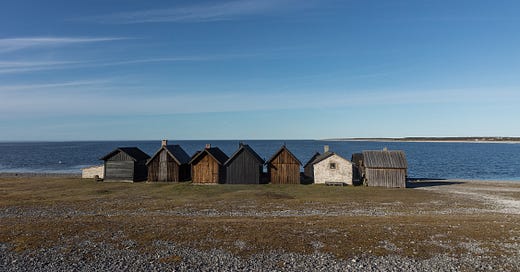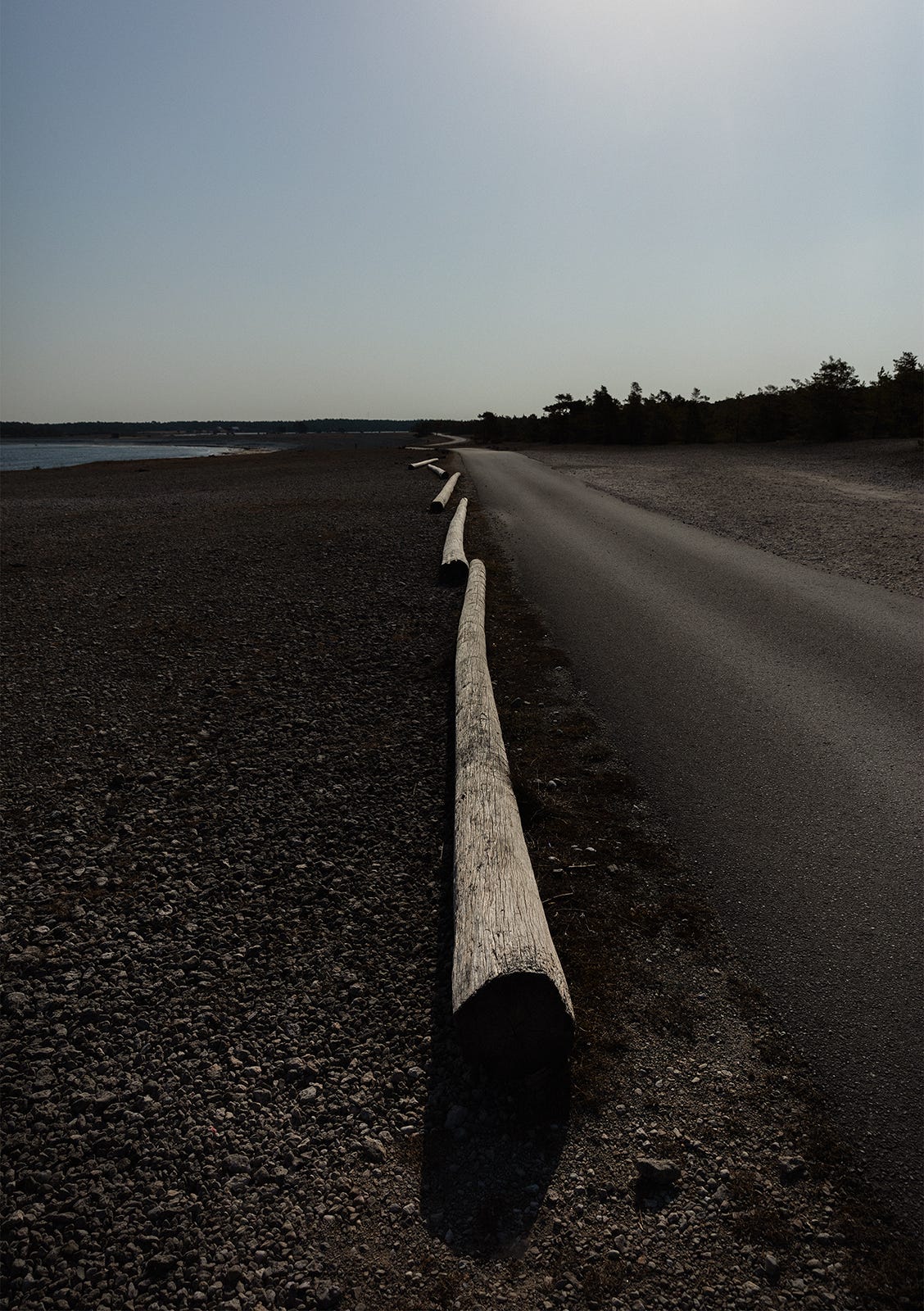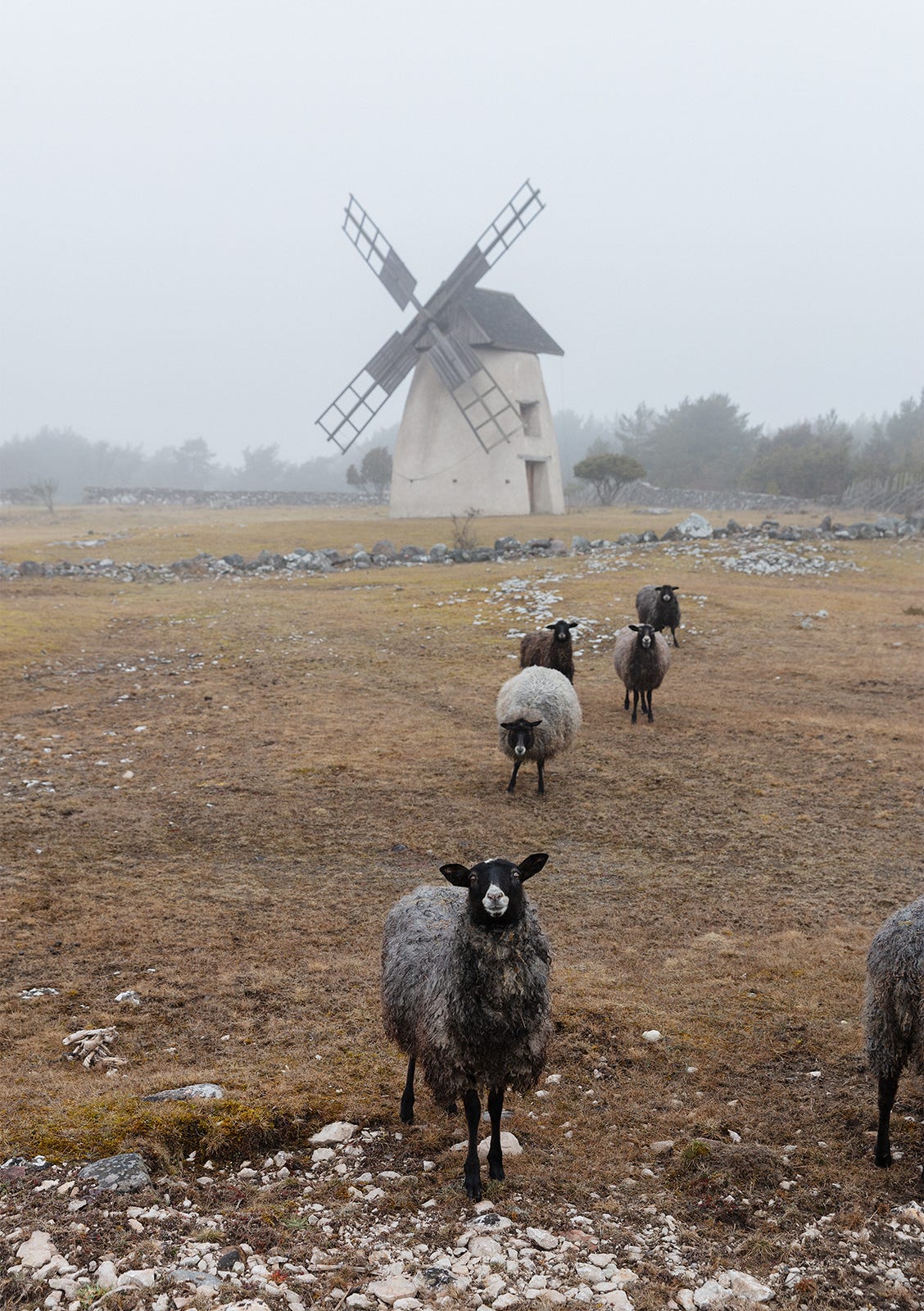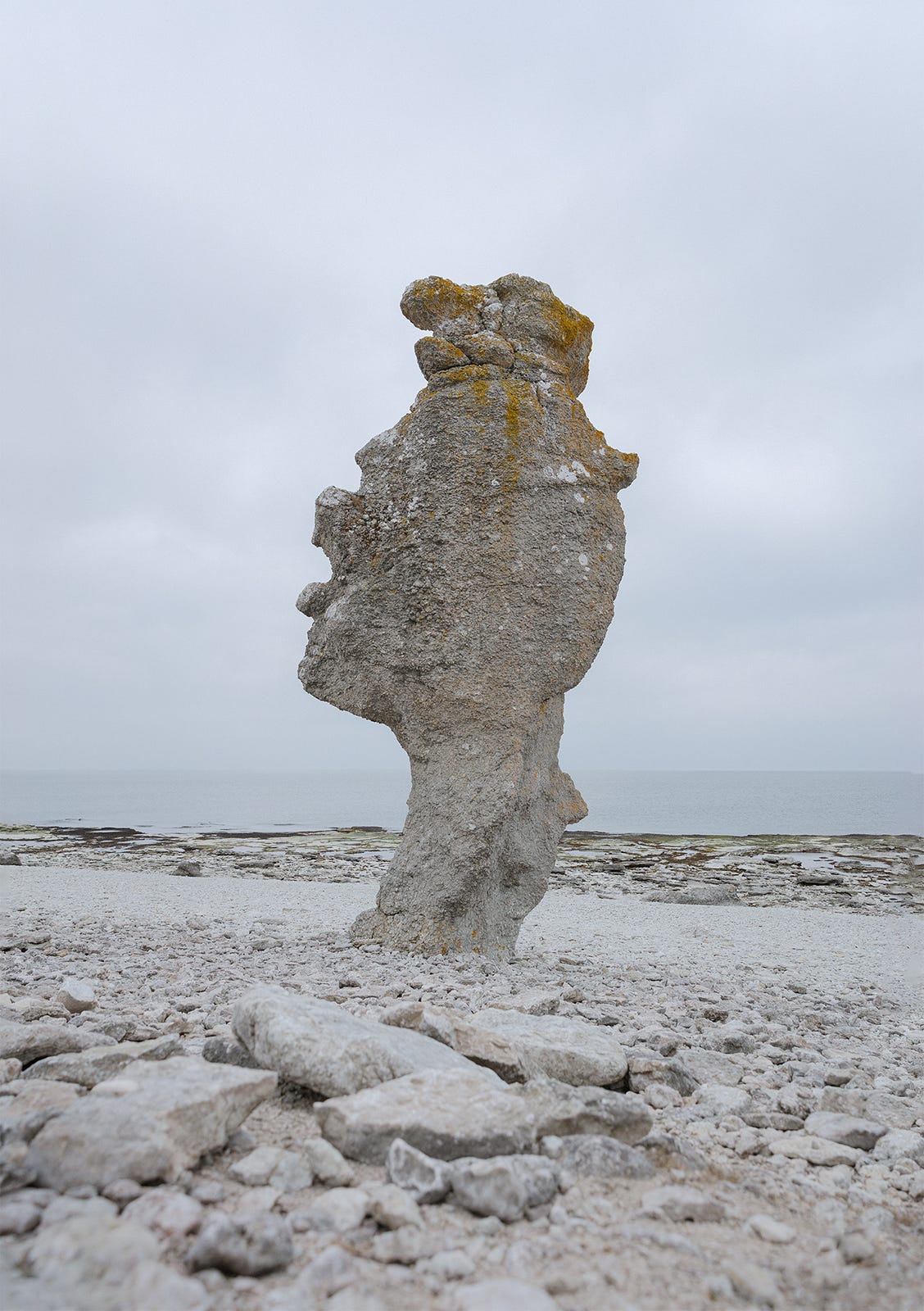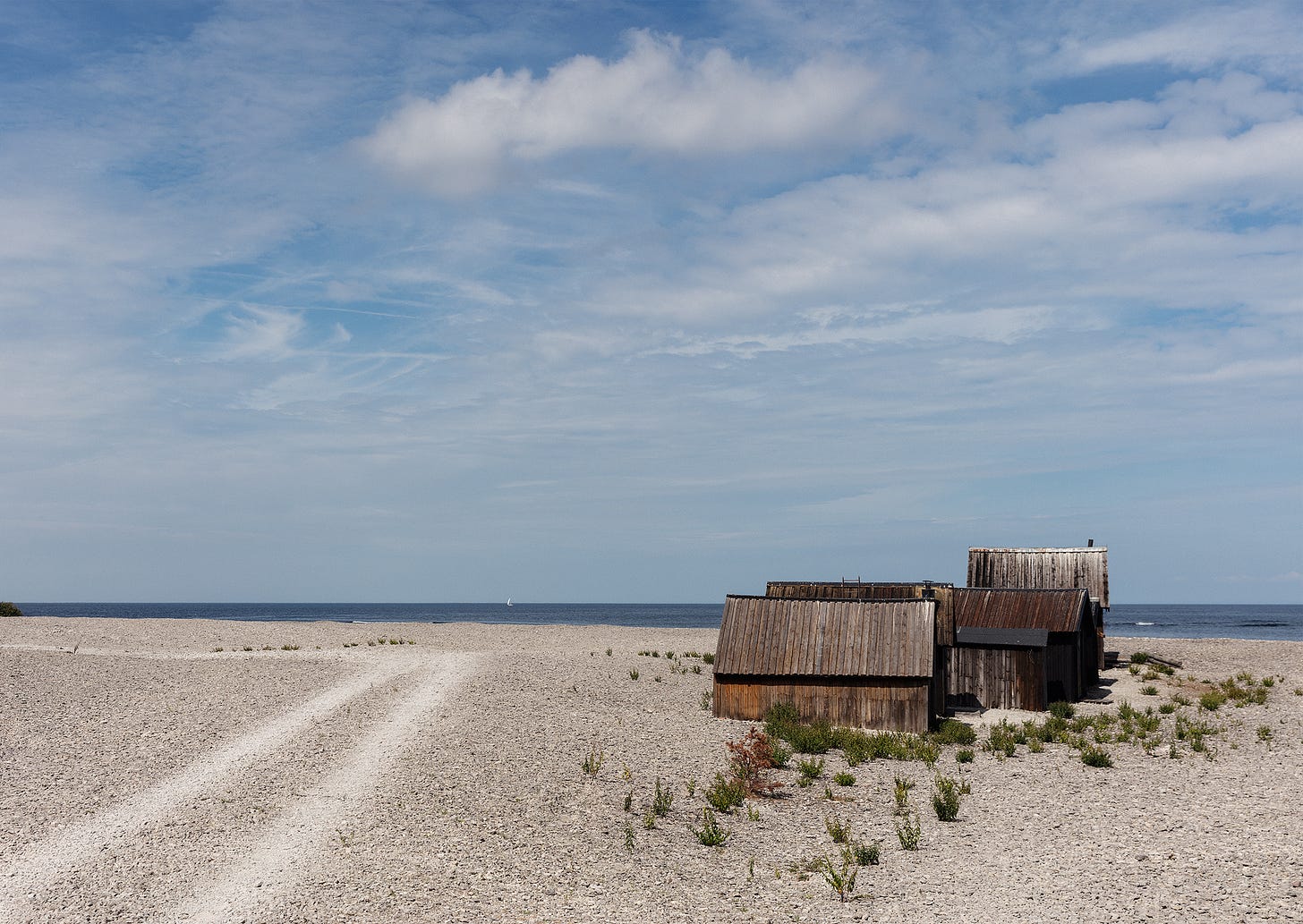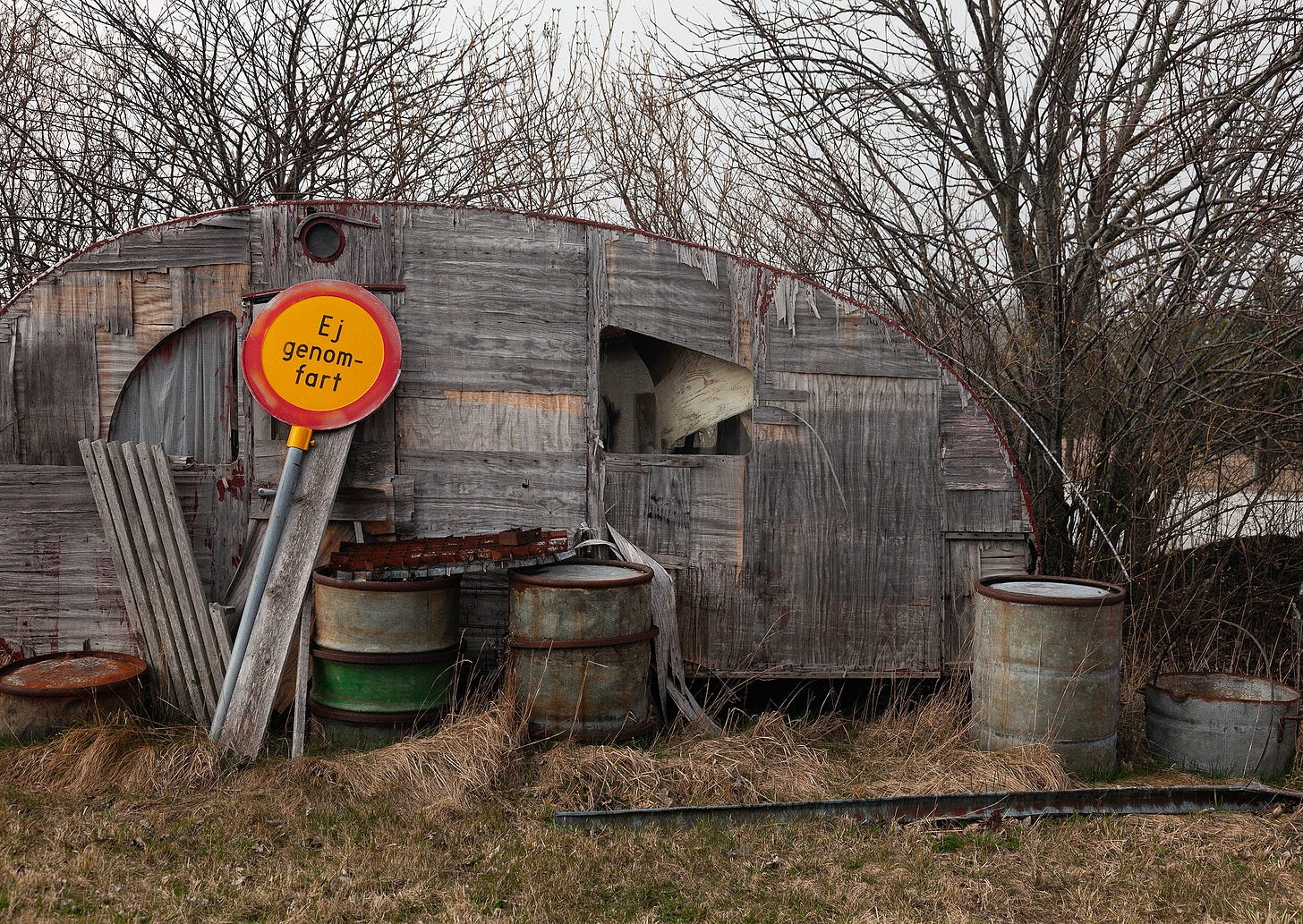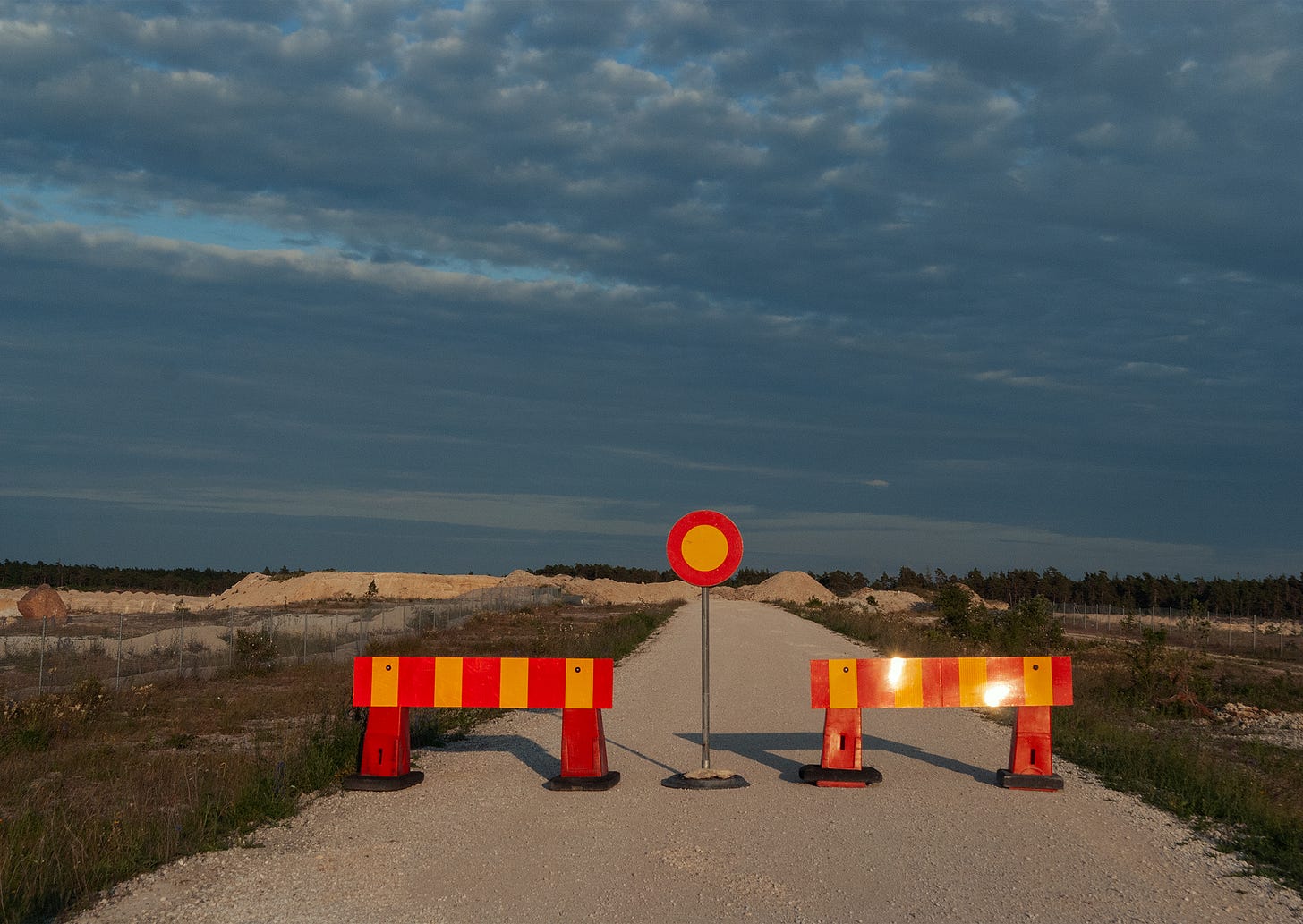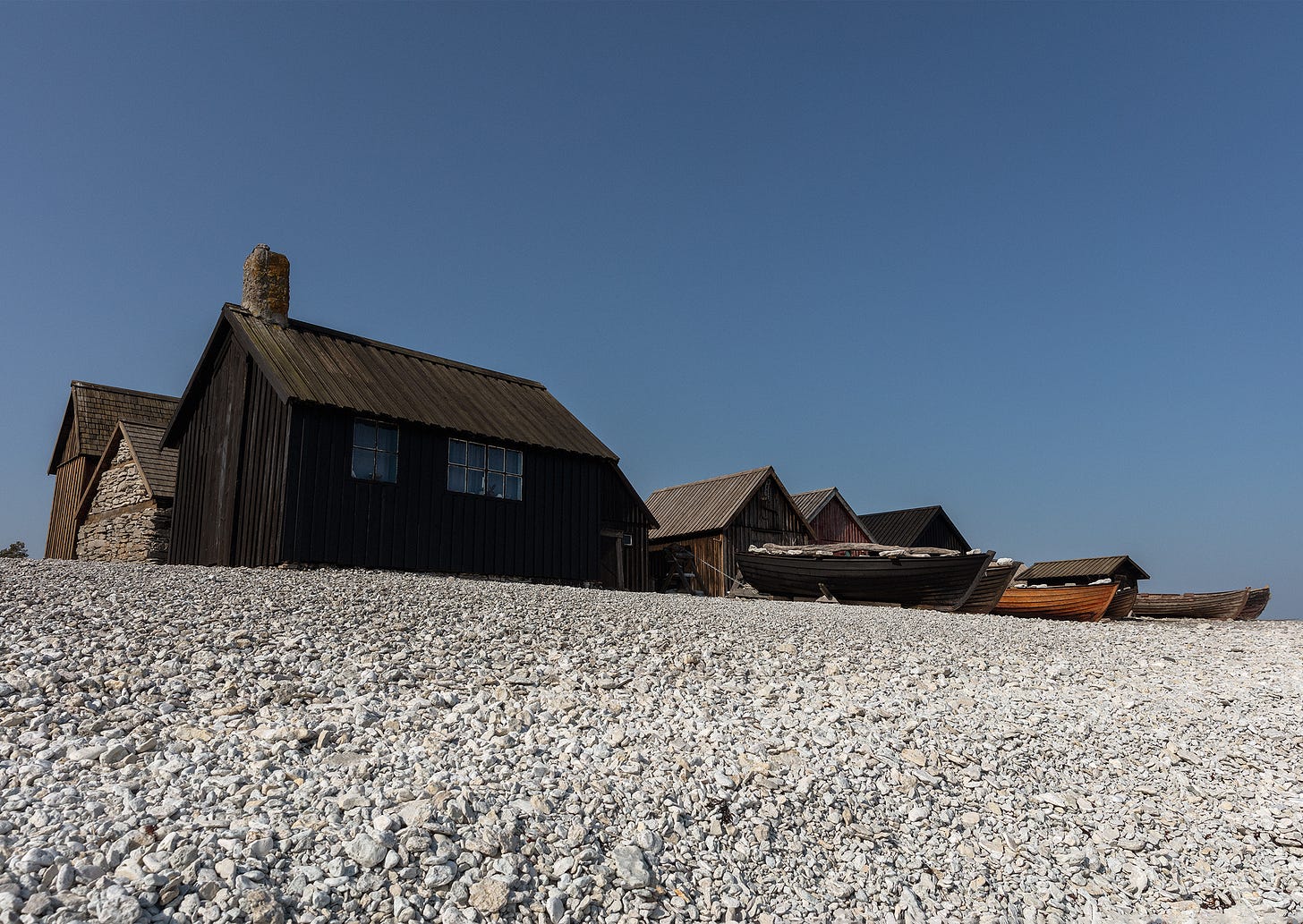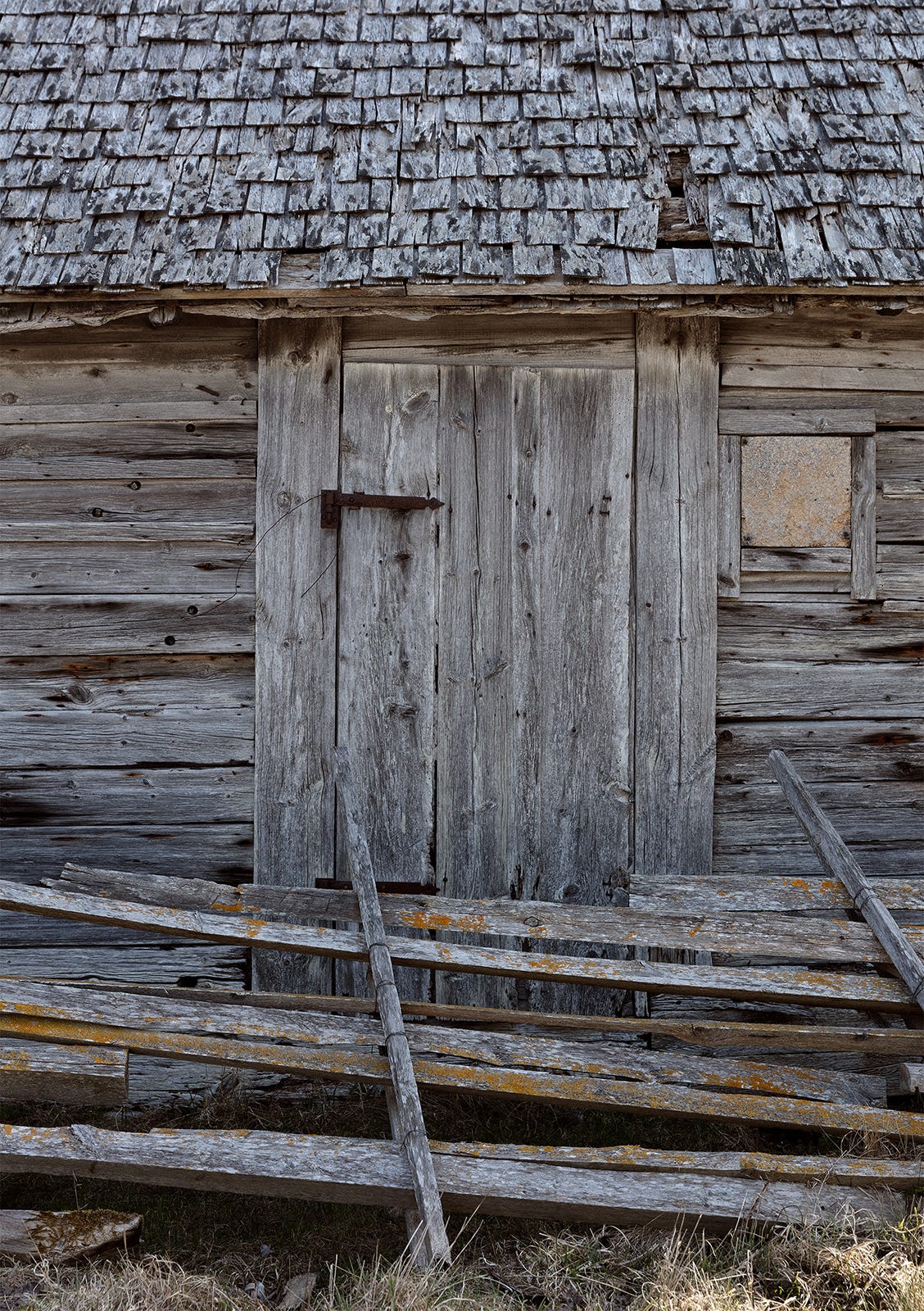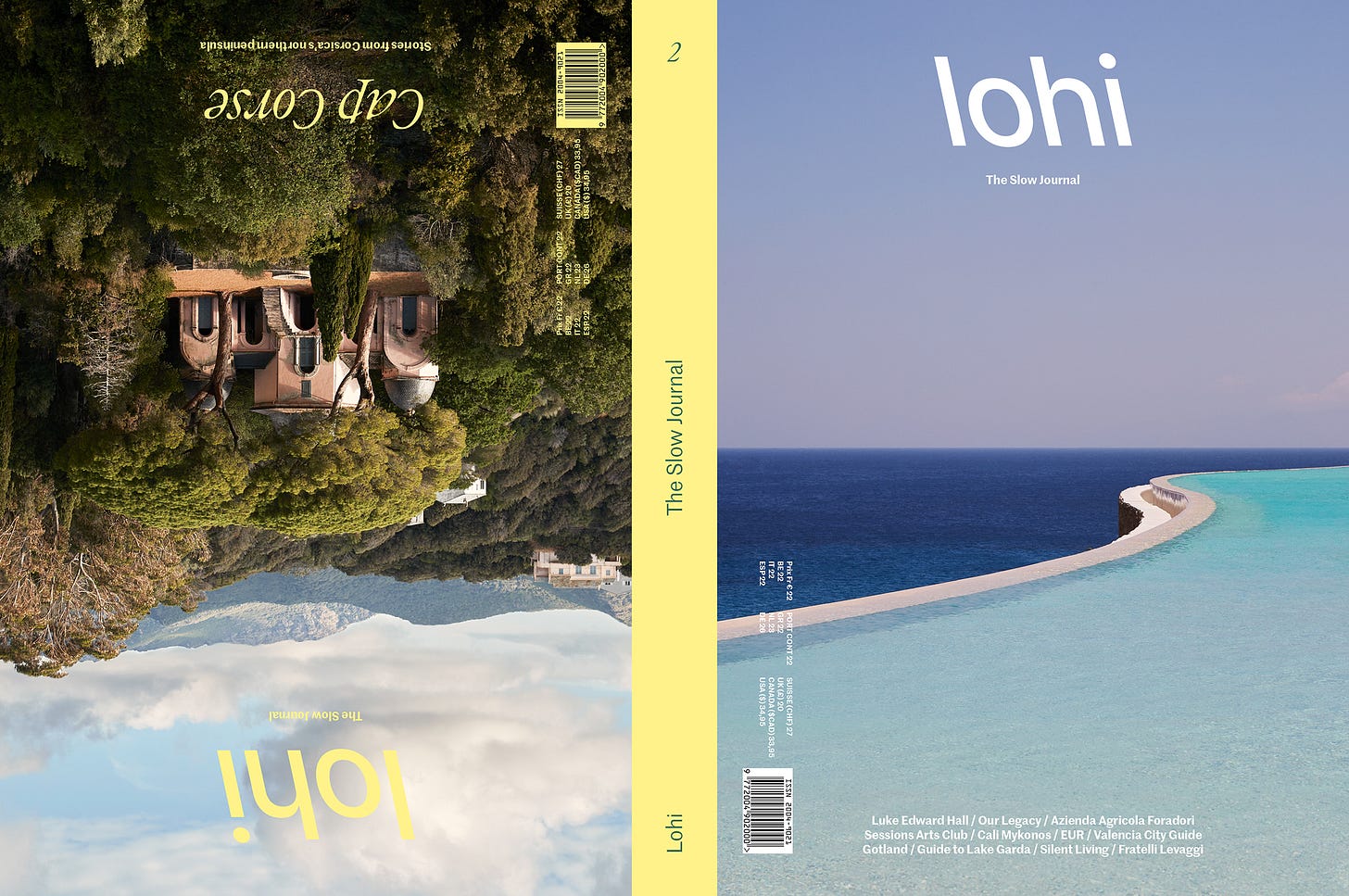Northern Shores / Perspectives on Gotland
Elisabeth Toll shares her life on the northern part of Gotland, Sweden’s largest island and her summer home since childhood.
Twice, Elisabeth Toll has been named Sweden’s fashion photographer of the year. Before turning to photography, she studied archaeology, history, and law. She began by specialising in darkroom printing and hand retouching, and this attention to detail is still one of her signature trademarks, even while shooting digitally.
After assisting various photographers in Paris, her first project was for the French Foreign Legion in Paris. After that, she turned to portraits and fashion, and her work has been published in French, Russian, and German Vogue. She has shot accessories for Louis Vuitton and landscapes for Le Bon Marché. Her work has also been exhibited in France, Sweden, Germany, Spain, and the US.
Having lived for two decades in Paris, she’s currently based in Stockholm, though her work takes her all around the world.
For Lohi Journal, she photographed one of her favourite places, the north part of Gotland, an island on the Swedish east coast, in the Baltic Sea.
For readers familiar with northern Europe, Gotland is a well-known destination. Strategically situated in the Baltic Sea, close to Russia, Poland, Finland, and the Baltics, for centuries the island has had immense geopolitical importance.
Visby, the capital and declared a UNESCO World Heritage Site, is the best preserved North European walled town, and the most complete of the early Hanseatic towns. Formerly a Viking site, it was the main centre of the Hanseatic League in the Baltic from the 12th to the 14th century. Because of its prominent position in Baltic politics and trade, it has more than 200 warehouses and wealthy merchant buildings dating back to the 13th century. Once, Visby was an impressive metropolis, enclosed by a strong defensive wall and divorced from its rural hinterland.
Today Gotland is a fully integrated part of Sweden, though historically there was a linguistic difference between the archipelago and the mainland (Gutnish being the original native language). For decades, it has been a popular summer destination, especially for those living in and around Stockholm, drawn here by the strange lunar landscape, defined by the many rauks, a column-like limestone formation common in northern Gotland and Fårö, a small island just north of Gotland.
Visby is located on the southern part, and this is where most visitors tend to spend their time on the island. Elisabeth Toll, on the other hand, is more at home on the less explored (and exploited) northern part of the island. We asked her to document her life on the island through photography and spoke with her about her relationship with and fascination with the island.
Do you remember the first time you visited Gotland?
No, I don’t. My dad bought it before he met my mom, along with a good friend of his (who later became my godfather). They found the cabin while they were on a cycling holiday, I think it was in 1963, and it cost SEK 5,000 [approximately €450].
The standard was initially very primitive, there was no running water but only a water pump, and no electricity either. After buying the cabin, they went to St. Petersburg and created travel stories that they sold for extra cash. In the meantime, they rented out the cabin, and with the extra income they could gradually renovate it. But considering the initial standard, the first tenants were probably not that happy. But that's not really what you asked...
I've been there all my childhood summers, and the time that I’ve spent in Gotland has been the very best time of my life. Both my parents were teachers, so they had two uninterrupted months of summer vacation.
We didn't have a car, so dad would send boxes of cargo – books and other things too heavy to carry – while we took a train to Nynäshamn and took the ferry over, then rode a bus for an hour, and then we walked three kilometres, carrying everything that wasn't in the cargo.
Nowadays I try to go there at least twice a year, but the problem is that my mother seals the cabin shut every time she leaves. There are two whole pages of instructions for how to close and open all the systems, so it's not worth going there for just a weekend. But when I'm there, I never want to leave because it's the best place. It's so difficult to be sad there. I've never been to a place where it's so difficult to be sad. At the same time, I’ve read that Gotland has the highest suicide rate in all of Sweden, so this may not apply to everyone. But it applies to me. Maybe because I spent my childhood there, I think that summers like that leave a mark on you.
What is it you like about Gotland, besides your personal memories?
I think the special thing about Gotland is that millions of years ago, it was a tropical island. Since then, the earth's plates have shifted radically. The fossils you find in Gotland are from molluscs that are also found in the Tropics. This means that the whole of Gotland is, in some way, taken out of its original geographical context. It’s very different from the rest of Sweden. It’s defined by this calcareous stone that makes everything appear barren. All the trees look sort of wind-torn, like desiccated little old men standing on a beach.
And I love the limestone quarries, they look like they’re on the moon. As our cabin is right next to a limestone quarry, my brother and I used to play there, and it was magical – we built forts on the moon! There are big water-filled holes with crystal clear, turquoise water that you can just jump into. And there are ravines. It was dangerous and exciting.
Limestone quarries dominate the entire industry on Gotland. In recent years, there has been a lot of fighting about the Ojnare forest – one of the quarries wants to exploit the land. But at the same time, the quarries are the foundation of Gotland's economy, it’s the limestone that makes Gotland so special. A few years ago, I had some friends visiting, and I took them to Lummelunda Cave, because it’s typically what many want to see when they visit. Their reaction was lukewarm… In the evening, I took them for a walk through the quarry, and they thought it was much better than Lummelunda Cave! The site was so much more spectacular, according to them.
I also really enjoy the white limestone found along the beaches. And all the beaches have fossils. There are beaches where every stone is a fossil! Nowadays, the authorities have banned people taking stones from the beaches, because everyone would do it, and eventually the beaches would have run out of stones, but you can still enjoy the stones on site – I think it's amazing that every single stone on the beaches is a fossil!
Otherwise, I like the architecture a lot, especially the small stone houses, they have such a distinct character, typical of the island. I would like to have a stone house like that one day…
The nature on Gotland isn’t picturesque but wild, almost savage. I like that. It’s my favourite type of landscape, not necessarily pretty, but with a personality and a temperament.
During your years on the island, how has Gotland changed?
When we were kids, tourists on bicycles would ride past our cabin and we would call out to them, “you’ve lost something”. And they would stop and look around and ask us what it was. “Speed!”. We thought that was very funny. But then more and more visitors from Stockholm would come. The part where I live, the northern part of Gotland, is still pretty unexploited by tourists.
I’ve rarely travelled south, because for many years we didn’t have a car, and so geographically we were very restricted. All the famous places that tourists usually want to see – Hoburgsgubben, Visby, and Katthammarsvik – are in southern Gotland. Though we now have a bakery in Rute that’s very popular, so some parts of the northern island are more frequently visited today.
There is a peninsula in the north called Furillen, which is also an old limestone quarry. A photographer bought it 25 years ago. I had wanted to buy that peninsula, I used to ride my bike there and fantasise that one day it would be mine. There are these amazing large concrete buildings, very strange looking, as well as an old railway bridge, everything surrounded by the sea. When I heard that it had been sold, I cried. But that same day, my godfather reached out and said he wanted to give us his part of the cabin. It was a strange coincidence.
The photographer turned Furillen into a luxury hotel called Fabriken. It's nice and has an excellent restaurant, as well as a photo studio that you can rent. So, to summarise, the change I’ve seen is that Gotland today is more accessible to visitors, and it’s easier to stay here comfortably. But this change is still more noticeable on the southern part of the island.
For many people, Gotland is inextricably linked to Ingmar Bergman and Fårö.
We live quite close to Fårö. Fårö is great. All the locals protected Bergman when he lived there. When journalists and tourists would ask where he lived, the locals would point in the opposite direction, consciously leading them the wrong way so they wouldn’t find him. He could live quite privately in Fårö. The beach where he filmed is absolutely beautiful. But to me, Fårö is more than just Bergman, it's old “Fårö men”, Gute sheep, and rauks. Those things are much more important to Fårö than Bergman, in my opinion.
What’s an old Fårö-man?
It’s an old man who is 90 years old, and who likes to say that he’s been to the mainland three times and to Sweden once. And by "mainland" he means Gotland. They have their own dialect and are very exclusive. For me, they’re the epitome of Fårö.
But I also really recommend going to Kulens bensin, run by an old man who’s had the café for as long as I can remember. He arranges the most incredible shows. Once Bill Haley’s Comets played there, the youngest member of the band was 75 and the oldest was 86 years old. They blew the barn’s roof off, it was fantastic! He’s really the core of the entertainment scene on Fårö. There’s also a French woman who runs Crêperie Tati. Visiting them is a must!
In Fårö, there is also a very nice restaurant, Fårögården, where you sit outside in a huge garden. It’s flat, so all the children can safely run around and play. If you want to watch the rauks, the restaurant is in the perfect location. There's something magical to that place – all you see is the sky and the sea, and there’s only that one house, a stone barn that they’ve converted into a gallery.
What about southern Gotland?
As I said, I stay mostly in the north. At first it was impossible for me to get there because we didn’t have a car. Now that I have one, I’ll go there on day trips, but I’ve always thought that the northern part is more fun and cooler.
Most tourists stay in the south, but things are developing in the north. My former assistant Charli has taken over an old hotel, that he’s running together with his girlfriend Loreen. The whole area around the hotel is fantastic, there’s an old quarry not far from there. Visiting the north is still a bit under the radar and that’s what I like about it.
Have you photographed a lot on Gotland?
Yes, I've taken all types of clients there, but then I've always photographed on the north side. It’s the most barren landscape on the island, with the rauks and the entire Stenkusten, which is the long white beach with the pines, stones, and fossils. You can also visit Gotska Sandön, a small island several hours off the shore from Gotland. Sometimes you’re allowed to spend the night, sometimes not. It’s very primitive, although I have read that nowadays there’s supposed to be a small hut that you can stay in.
When I'm in Gotland, I usually photograph the same places, I return to the sites that I find the most magical. They are the ones that I photograph the most. I’ve always photographed places and landscapes. It’s a kind of refuge for me.
When you’re alone in nature – and even if there are people with you, but nature is alone, if you understand what I mean – that’s the most peaceful moment I know. If you can capture that in a picture, you carry that sense of peace with you.
I have such a hard time remembering things, places, and events that I haven't photographed. It's like that novel about a man who can only feel emotions for people that he’s seen through the camera lens. It's not that extreme for me, but if I'm on a trip and I don't take any pictures, I'll forget everything that happened and all the places we went. But as soon as I see a photo from the trip, I’ll remember the place and who was there, the feelings I had, whether it was a fun or horrible experience.
I remember everything through photos. It's always a trade-off, because when you are in beautiful surroundings in nature you just want to enjoy it and to be in the moment, and you can’t do that if you’re photographing, then you have to focus on creating the image. You always have to choose. I often end up choosing to take the picture, because otherwise I won't remember it. That’s why I have so many photos from places in northern Gotland, attempting to capture nature at its most magical.
Elisabeth Toll’s Favourite Places in Northern Gotland
Kutens bensin/Crêperie Tati, Fårö Broskogs 1156, Fårö
Gas station transformed into a 1950s inspired café, serving French cuisine with an emphasis on crêpes from Brittany.
Valleviken Hotell, Rute Hamnsbacken 45, Lärbro
Charming hotel run by Elisabeth’s former assistant Charli and his partner Loreen (known form the Eurovision Song Contest).
Fabrik Furillen, Rute Furilden, Lärbro
Limestone quarry turned into design hotel with restaurant.
Lergrav fiskeläge, Lärbro
Small fishing village, easy to visit on your way to Furillen.
Lauters Gårdskrog & Café, Fårö Lauter 1993, Fårö
Restaurant and café serving homemade food, close to the rauks on Fårö.
Bergmancenter, Fårö Svens 1118, Fårö
Café and exhibition hall in Ingmar Bergman’s former home. Every Sunday, there’s a screening of current films (with subtitles in English).
Bungemuseet, Bunge annex 140, Fårösund
An open-air museum about Gotlandic peasants, from the early 20th century.
Bungenäs kalkladan, Västra vägen, Fårösund
Restaurant and hotel housed in the former dining hall for the employees of the nearby limestone quarry.
Fårösund fästning, Bundenäs 569, Fårösund
19th-centur fortress turned into contemporary hotel.
Bläse Kalkbruk, Flering Bläse 325, Lärbro
Café, restaurant, and museum documenting the Bläse limestone quarry.
PåÄngen Mat och Bar, Lårbro Storugns 2716, Lärbro
Fine dining meets street food.
Storugns Picnic – micro bakery, Lårbro Kauparve 2780, Lärbro
Fresh bread, locally produced ice-cream, and yoga.
This article was originally published in Lohi Journal issue two, available in stores now.


